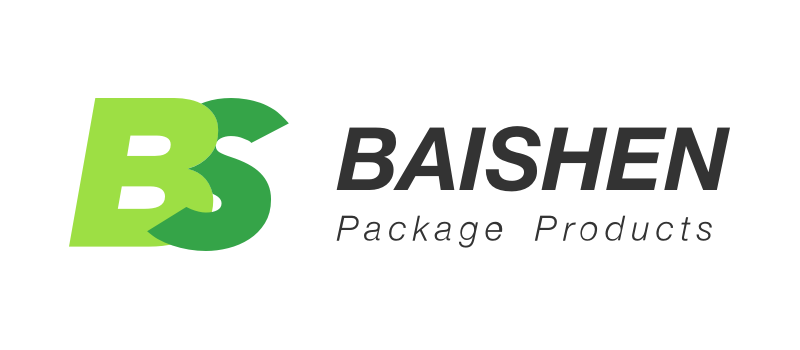According to the latest research in the industry, the global coffee packaging market was USD 1.11 billion in 2024 and is expected to surpass USD 2.17 billion by 2037 with a growth rate of approximately 5.3% CAGR. Another credible source projects the market to be USD 5.72 billion in 2024, and it is projected to grow by 5.1 % CAGR to attain a value of close to USD 8.96 billion by 2033. These figures highlight the importance of packaging not only as a branding tool, but also as a method of preserving coffee beans and ground coffee against oxidation, moisture, and aroma loss. Regardless of the type of packaging you are using, quad seal bags, flat bottom bags, pillow bags, or stand-up pouches, the quality of the product, shelf life, shipping durability, and sustainability are directly influenced by the packaging used. This guide will tell you about the best coffee packaging types, their materials, practical functions, such as valves and zippers, as well as how to make the correct coffee packaging choice in favor of your brand.
Why Coffee Packaging Matters for Your Brand and Product Quality
Coffee packaging is not just a protection; it has a direct impact on the quality of the product, brand image, and consumer confidence. Coffee beans and ground coffee lose their flavor very fast when not properly packaged, as they are exposed to oxygen, moisture, and light. The right structure and materials maintain freshness, aroma, and roast profile, be it bags, cans, capsules, or jars.
Another important branding tool is packaging. Its design, material, and functionality will affect the perception of value and quality in the mind of the consumers even before the first sip. Whether it is custom-printed bags or tinplate cans, packaging conveys positioning, creates recognition, and aids differentiation in a competitive market.
Lastly, usability is increased by good packaging. Features such as resealable closures, degassing valves, and clear labeling enhance the customer experience and increase the likelihood of repeat purchases. In simple terms, good packaging will safeguard your coffee- and your brand.
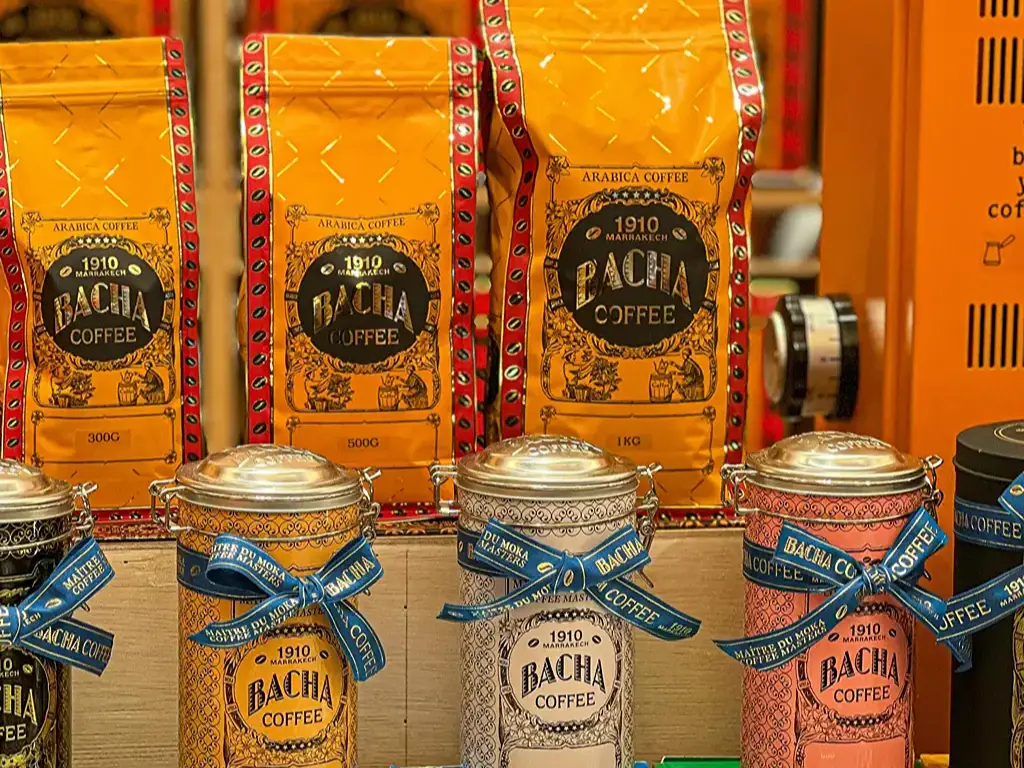
The Most Popular Types of Coffee Packaging
As far as the coffee packaging types are concerned, there is no one size fits all. The formats possess their structural advantages, pricing, and branding opportunities. As a specialty roaster, you may be looking to make a visual statement, or as a high-volume producer, you may be looking to maximize shelf life and cost, but either way, it is important to know the correct packaging to use to maintain quality, promote sustainability, and be in line with your target market.
| Packaging Type | Branding Potential | Shelf Impact | Sustainability | Cost Efficiency | Barrier Protection | Reusability |
| Side Fold (Gusseted) | Moderate – supports labels but limited surface area | Basic – can stand but lacks stability | Moderate – often uses mixed materials | High – cost-effective and easy to produce | Moderate – good with valve integration | Moderate – resealable options available |
| Flat Bottom Bag | High – large printable surface, supports premium finishes | Strong – excellent upright display | Moderate – often multi-layer, can be recyclable | Moderate – more expensive than gusseted bags | High – ideal for long-term freshness | High – often includes zippers or tin ties |
| Stand-Up Pouch | Good – front and back panels for branding | Moderate – flexible but stands well | Good – compatible with eco-materials like PLA | High – lightweight and efficient | Moderate – may lack high-barrier structure | High – resealable and user-friendly |
| Pillow Pack / Filter | Low – minimal space for design | Low – not ideal for visual display | Low – usually non-recyclable plastic | Very High – cheap and scalable | Low – minimal protection post-opening | Very Low – single-use only |
| Coffee Pod / K-Cup | Limited – mostly cap area for branding | Moderate – small but uniform display | Poor – difficult to recycle (except specialty bioplastics) | Low – high production costs | Low to Moderate – freshness issues common | Very Low – disposable |
| Coffee Jar (Glass/Plastic) | Moderate – label space available | Moderate – visible product helps | Moderate – recyclable but heavy footprint | Low–cost to produce and ship | High – airtight sealing | High consumers often reuse |
| Coffee Can (Metal) | Moderate – cylindrical printing space | Good – sturdy and professional look | Moderate – recyclable but energy-intensive | Low – expensive material and tooling | Very High – strong oxygen and moisture barrier | Moderate – some reuse potential |
Side Fold (Gusseted) Bags
One of the oldest and most common types of coffee bags is the side fold or gusseted bag. They can be used to package coffee beans and ground coffee due to their expandable side panels, which allow for increased internal volume. They are usually fitted with degassing valves, tin ties, or zippers to make them more functional in a basic way. They are cheap and simple to fill, but have little space to brand and are also unstable on shelves. These bags are suitable for roasters who are more concerned with functionality rather than appearance, especially in a wholesale or local retail setting.
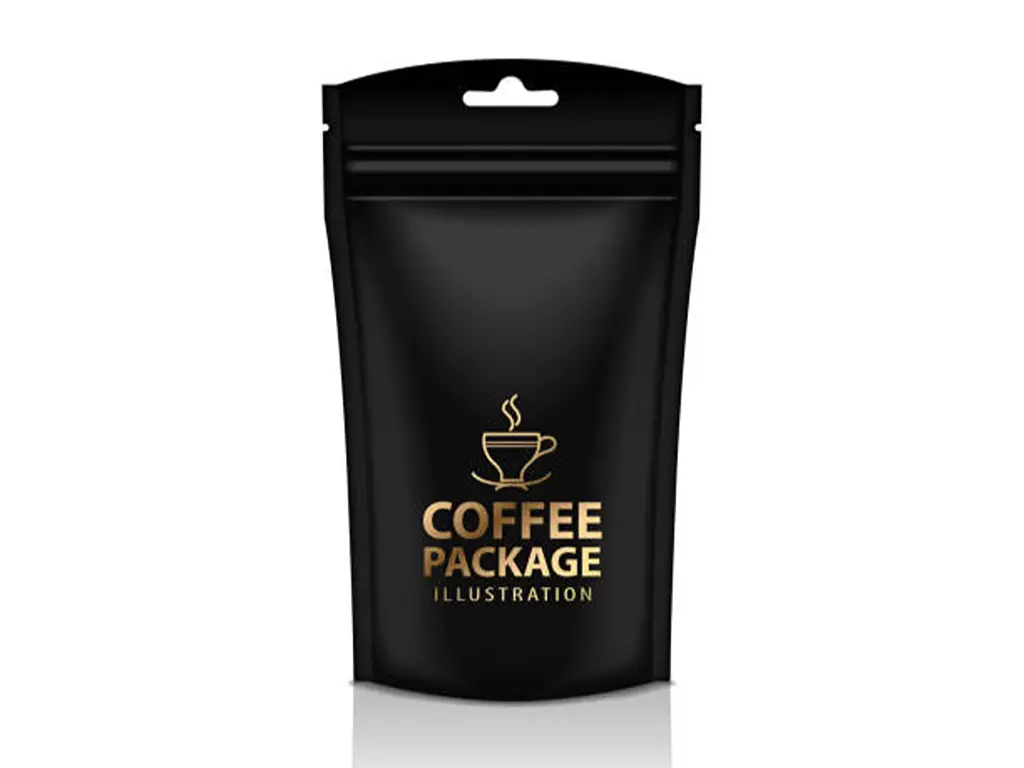
Flat Bottom Bags
Box bottom or block bottom bags, also known as flat bottom bags, have gained popularity in the specialty coffee packaging industry. Their strengthened design enables them to stand up safely, and the five printable sides provide plenty of room to print custom artwork, labels, and matte finish branding. Such bags normally accommodate enhanced features such as zippers, one-way valves, and even eco-materials. They are suitable for both whole bean and ground coffee and are suitable in high-end coffee brands that seek to have a strong shelf presence and customer interaction.
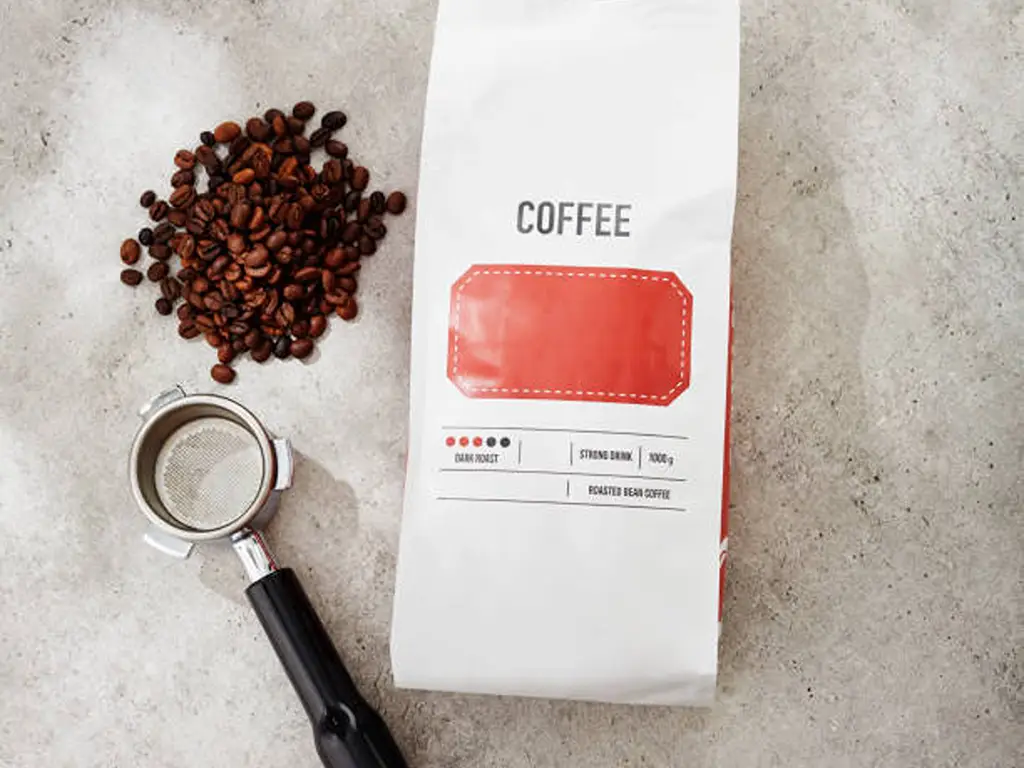
Stand-Up Pouches (Doypacks)
Stand-up pouches or Doypacks are light and flexible and are commonly used in many industries, including coffee. They are particularly well-liked by brands that sell ground coffee or small-batch beans in smaller quantities or subscription packages, as they are resealable and portable. These pouches can, however, wrinkle in transit and are not always as structurally strong as other formats, which can influence their perceived value. It is most appropriate for direct-to-consumer brands that need functional and cost-effective packaging that can be easily changed in design.
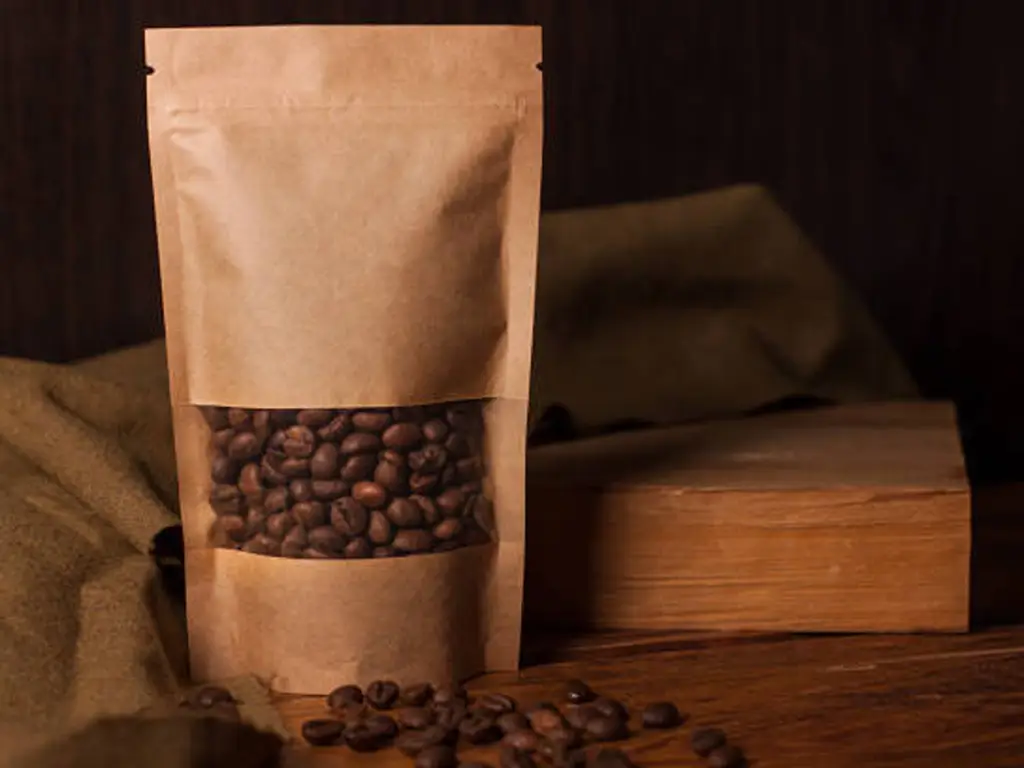
Pillow Packs and Filter Packs
These single-use, minimalist options are mostly applied to pre-measured ground coffee, e.g. in hotel rooms, offices, or institutions. Very cheap and simple to manufacture in large quantities, yet they have low branding capabilities and are not resealable. Single-layer plastics also have an environmental impact on them. Specialty roasters hardly ever use it, but it is still viable in mass-market, convenience-oriented use.
Coffee Pods and K-Cups
Single-serve coffee, such as coffee pods and K-Cups, is only compatible with ground coffee. Their closed structure provides high retention of freshness in a short shelf life. But they are expensive to produce, are frequently not recyclable, and restrict consumer contact with the source of the coffee or the roast degree. They are appropriate for large brands in the convenience market but not to those that are sustainability or artisan-oriented brands.
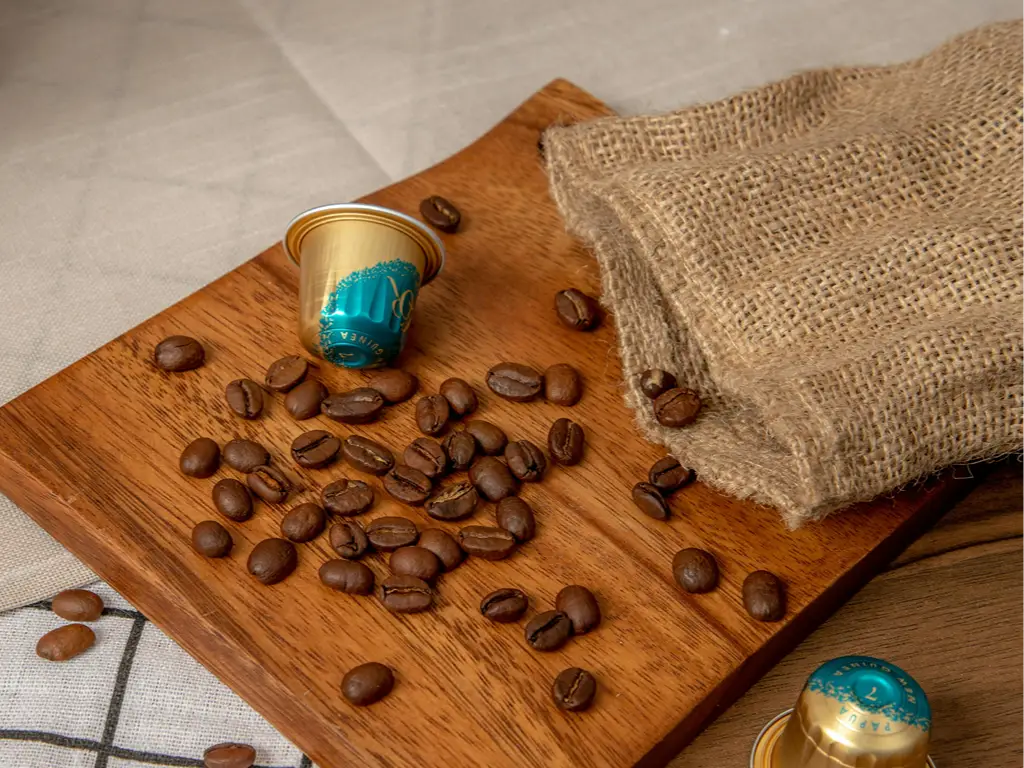
Coffee Jars (Glass & Plastic)
Coffee jars, which are usually used in instant coffee segments, offer an excellent moisture barrier and product visibility. Glass jars give a feeling of durability and transparency, whereas plastic jars are lighter but questionable in terms of sustainability. Both are fairly large and delicate (glass, in particular), which is less suitable for small-batch or e-commerce-oriented roasters. They are more appropriate for long shelf life, value products in supermarkets.
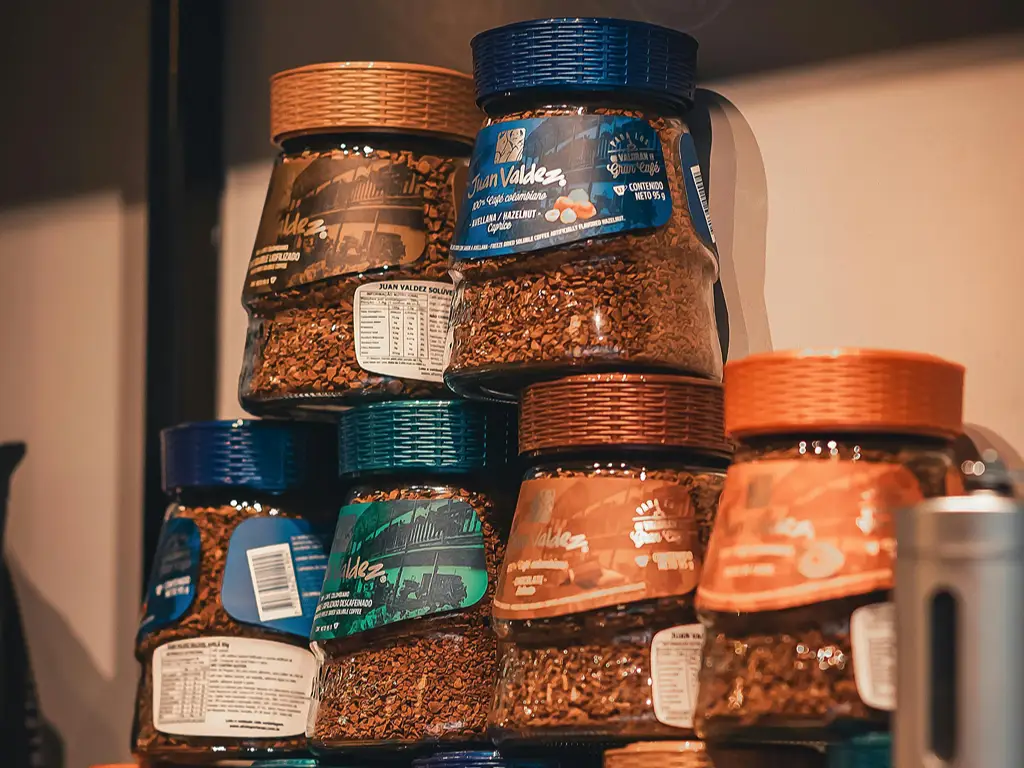
Coffee Cans (Aluminum or Tinplate)
Tinplate or aluminum coffee cans are also excellent barrier materials to moisture and oxygen, and thus are good at keeping products fresh over long periods. They are durable, reusable, and give a retro style that some legacy or heritage brands find appealing. They are, however, costly to manufacture, hard to customize in small quantities, and are not commonly used in specialty coffee markets except as gift or promotional sets.
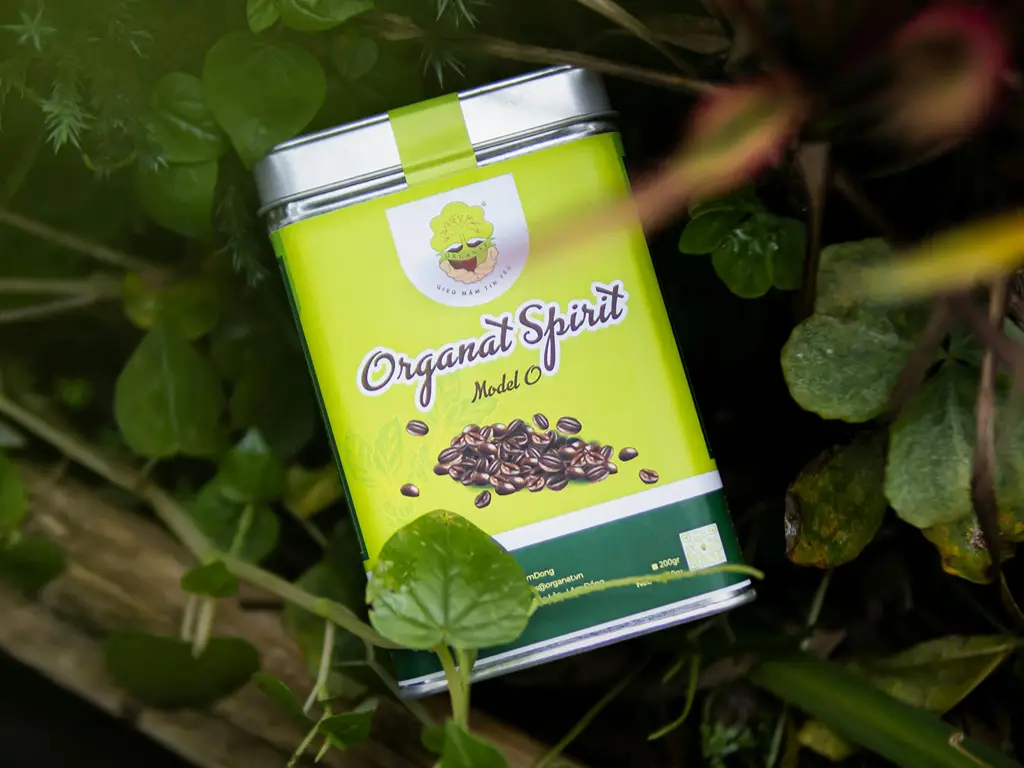
Coffee Powder Packaging vs. Coffee Bean Packaging: Key Differences
Although both coffee powder and whole beans belong to the same category of coffee products, their physical characteristics, sensitivity to shelf life, and logistics issues demand significantly different packaging approaches.
Coffee Powder: Higher Demands on Barrier Protection
The surface area of ground coffee is much larger than that of whole beans, and this increases the rate of oxidation and loss of aroma. It is also more hygroscopic, which means that it absorbs moisture easily, which affects flavor and shelf life. To counter this, the packaging of coffee powder usually needs high-barrier multi-layer films like PET/AL/PE or other foil-based laminates. These are the best structures to guard against oxygen, moisture, light, and contaminants.
Integrity of sealing is particularly important. Heat-sealed closures, resealable zippers, and one-way degassing valves are used to maintain freshness and keep the product uncontaminated during transportation or multiple openings. Also, powder is prone to sticking to inner surfaces, thus inner laminates are usually chosen in low static and clean seal regions.
Whole Bean Coffee: Focus on Structural Integrity and Shelf Impact
Roasted coffee beans are less sensitive to moisture than ground coffee but continue to emit carbon dioxide for several days post-roast. This off-gassing can create packaging stress or puffiness, which is why one-way degassing valves are essential here, too. These allow gas to escape without allowing oxygen in, maintaining optimal internal conditions.
Bean packaging emphasizes structural support and presentation. Formats like flat bottom pouches, gusseted bags, and quad seal bags are preferred for their ability to stand upright, provide multiple print panels, and support heavier fills without tearing. These formats are also easier to display and store—critical in retail environments.
In short, coffee powder packaging should prioritize maximum barrier performance and sealing security to protect the product’s finer texture and reactive surface area. In contrast, coffee bean packaging benefits more from durable construction, upright formats, and presentation flexibility, while still maintaining moderate protection against environmental factors.
Why Bag Packaging Dominates the Specialty Coffee Market

The versatility, functionality, and efficiency of the bag packaging have made it the choice in the specialty coffee market. Coffee bags, such as flat bottom bags, quad seal bags, and gusseted bags, can provide better control over important quality parameters such as aroma preservation, moisture resistance, and degassing compared to rigid forms such as cans or jars. The combination of a one-way degassing valve, a resealable zipper, and multilayer barrier films enables roasters to keep coffee fresh between packaging and brewing.
Branding-wise, bags are a flexible surface to use for custom coffee packaging. Coffee brands can easily and effectively convey origin, roast level, tasting notes, and sustainability efforts, whether printed directly or finished with custom labels. The selection of material, such as kraft paper or matte finish film, also assists in product differentiation and brand alignment.
Operationally, the bags are space-saving and lightweight, which saves on shipping costs and environmental effects. Most of the options now include sustainable packaging materials like PLA or recyclable polyethylene, which is a compromise between performance and sustainability. Bag packaging is the most strategic and scalable solution for specialty coffee roasters where freshness, presentation, and cost-efficiency are all important factors.
How to Choose the Right Coffee Bag Size for Your Market
The choice of coffee bag size is not only about the fit of volume, but a trade-off between freshness, shelf presence, cost-efficiency, and consumer behavior. Various market segments and sales channels require different formats, and matching the bag size with the usage context can make a big difference in the performance of your product.
In the case of retail shelves and direct-to-consumer models, 250g and 500g bags are the most versatile. The 250g size is particularly popular with specialty roasters, providing a good combination of perceived value and freshness of whole bean or ground coffee. In the meantime, 500g formats are more attractive to frequent drinkers who want a more long-term supply, particularly with a zipper.
On the contrary, bulk packaging (1kg to 2kg) is better suited to cafes, restaurants, and office supplies. These sizes minimize packaging material by weight of coffee, and simplify restocking in foodservice, but need high-barrier, durable bags to maintain product integrity over time.
In the case of sample packs, seasonal editions, or subscription boxes, smaller packs of 50g or 100g may be very effective. These formats minimize consumer reluctance, aid product discovery, and offer a low-cost point of entry to new customers.
Lastly, take into account regional preferences. The North American markets prefer 12 oz or 1 lb bags, whereas the European and Asian markets are used to 200g-250g packs. Selecting a format that your audience is accustomed to not only helps in pricing strategy but also creates instant trust on the shelf.
Coffee Packaging Materials: Choosing the Right Barrier for Freshness
The packaging materials are very important in maintaining the flavor, aroma, and shelf life of coffee. A good barrier should be able to guard against oxygen, moisture, light, and aroma loss, as well as be in line with the sustainability and market positioning of the brand. The following are the primary material choices in contemporary coffee packaging:
- Kraft Paper
Kraft paper is popular due to its natural look and environmental friendliness, which is why it is frequently adopted by brands that value sustainability. It is recyclable and biodegradable, and has no natural barrier strength. Consequently, it is normally laminated with polyethylene or foil to enhance performance. Kraft paper is appropriate for the brands that have a rustic or artisanal image, particularly when combined with custom labels or simple artwork.
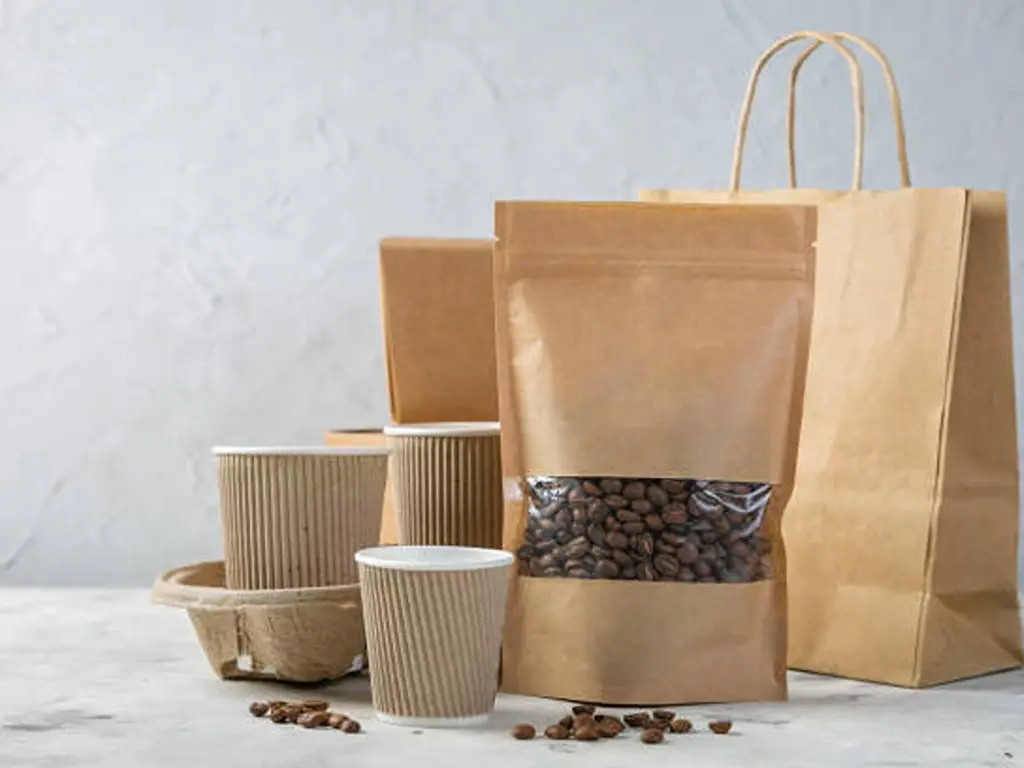
– Plastic Films (LDPE, BOPP, PET)
The materials are very common because they are durable, flexible, and efficient in sealing. LDPE offers heat-sealable inner layers; BOPP offers better print quality and clarity; and PET offers a strong outer shell. Although these plastics are not biodegradable, they are light and can be recycled according to local infrastructure. Appropriate for brands that require high-barrier, low-cost solutions to distribute in large quantities.
– PLA and Other Bioplastics
Derived from renewable sources like corn starch, PLA offers a compostable alternative to conventional plastics. However, its barrier properties are weaker unless layered with other materials. PLA-based packaging is ideal for environmentally conscious brands, though it requires industrial composting and careful handling in humid environments.
– Aluminum Foil Laminates
Foil offers maximum protection against oxygen, light, and moisture. It is the material of choice to package high-end whole bean or specialty espresso when used in conjunction with degassing valves. The negative aspect is that it is not recyclable; most foil laminates cannot be recycled in the mainstream recycling systems. Ideal in high-end products where shelf life and flavor are essential.
– Rice Paper and Other Alternatives
Rice paper provides a handcrafted, touchable appearance that is attractive to boutique or limited-edition product lines. It is light and biodegradable and needs to be strengthened with an internal liner to provide sufficient protection. Other new materials are cellulose films and paper-plastic hybrids that are aimed at striking a balance between performance and environmental impact.
Functional Features to Improve Coffee Packaging Performance
Coffee packaging performance is associated with functional features. They have a direct influence on freshness, convenience of use, and brand experience. In the case of specialty coffee, where shelf life, flavor integrity, and presentation are important, these elements are not optional, but necessary.
-One-Way Degassing Valves
Newly roasted coffee emits carbon dioxide for a few days. In the absence of a degassing valve, the accumulation of gases may affect the integrity of the package and the taste of the product. A one-way valve lets out the CO2 but does not allow oxygen in, which is vital to slowing the oxidation process and keeping food fresher longer. This is particularly critical when it comes to whole bean packaging that is meant to have a longer shelf life or to be shipped abroad.
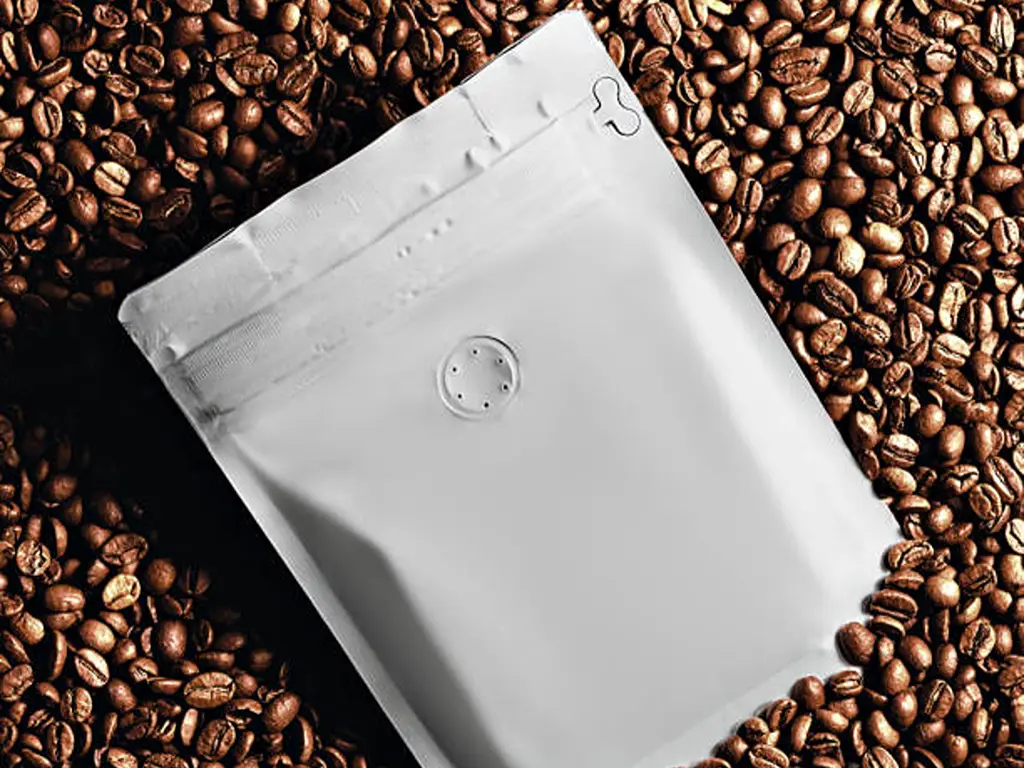
-Resealable Closures (Zippers, Tin Ties)
As soon as it is opened, coffee starts to lose its aroma and absorb moisture. The bag can be resealed by zipper seals and tin ties to ensure that the quality is maintained over time. These attributes also minimize wastage, make storage convenient, and increase the satisfaction of the user, especially in home and cafe environments where coffee is not consumed immediately.
-Heat Sealing and Nitrogen Flushing
The industry standard of keeping products intact until use is heat sealing. Nitrogen flushing is used to replace the oxygen in the bag with inert nitrogen gas prior to sealing, in more sensitive or high-value blends. This slows down the oxidation process and safeguards volatile substances. It works particularly well with espresso roasts or ground coffee sold in markets around the world where transport time is an issue.
-Reinforced Structures for Durability
The packaging should be transportable and handleable. Alternatives such as quad seal and gusseted bags have improved shape retention and seam strength. These designs assist the product to reach the destination in good shape, with fewer returns, a brand image, and professional shelf presence.
-Ease of Opening and Use
Consumer-friendly aspects like tear notches or press-to-close zippers make the consumer experience smooth. Functional design minimizes frustration, promotes repeat buying, and indicates attention to detail, which are the qualities of high-quality coffee brands.
Sustainable Coffee Packaging: Trends and Considerations
The concept of sustainability has been part of the decision-making process when it comes to coffee packaging. Customers no longer consider only the taste and the place of production, but also the environmental effects of the product, such as the packaging, transportation, and disposal of the product. In the case of coffee brands, the sustainability-related packaging decisions are becoming more and more linked to brand credibility and customer loyalty in the long term.

-Compostable and Biodegradable Materials
Bio plastics like PLA (made of corn starch), rice paper, and cellulose-based films are on the rise. Although they tend to offer less barrier performance than multilayer laminates, they are attractive to environmentally conscious consumers and are appropriate for short shelf-life products or local markets. Sustainable brands tend to use such materials as a part of the overall eco-positioning strategy.
-Recyclable Packaging and Material Clarity
Recyclable coffee packaging formats are being made using flexible plastics such as mono-material polyethylene. The options provide a trade-off between protection and recyclability, especially when they are designed to be compatible with local recycling systems. On-pack labeling and disposal instructions can be clear to assist in closing the gap between good intentions and reality.
-Minimalist Design and Low-Impact Printing
Recycling can be simplified by reducing the complexity of the material, e.g., by not using metallic laminates or multilayer films. Brands are also embracing low-impact printing techniques, such as soy-based inks and matte water-based coatings, which minimize chemical and energy consumption during the manufacturing process. Plain kraft paper bags with minimal ink coverage are becoming more popular as a visual and environmentally efficient packaging.
-Regional Sourcing and Supply Chain Efficiency
Environmental impact does not only apply to materials but also to transportation and sourcing. The locally or regionally produced packaging can also assist in minimizing the logistics-related emissions. It also enables quicker turnaround, boosts local economies, and makes it easy to comply with sustainability standards.
Custom Branding and Design Tips for Coffee Packaging
The branding tool in specialty coffee is very strong, and one of the is packaging. It is not just about the looks; it is about identity, values, and quality in a single glance. Strategic design not only creates attraction but also creates long-term recognition and trust. This is how you can go about it:
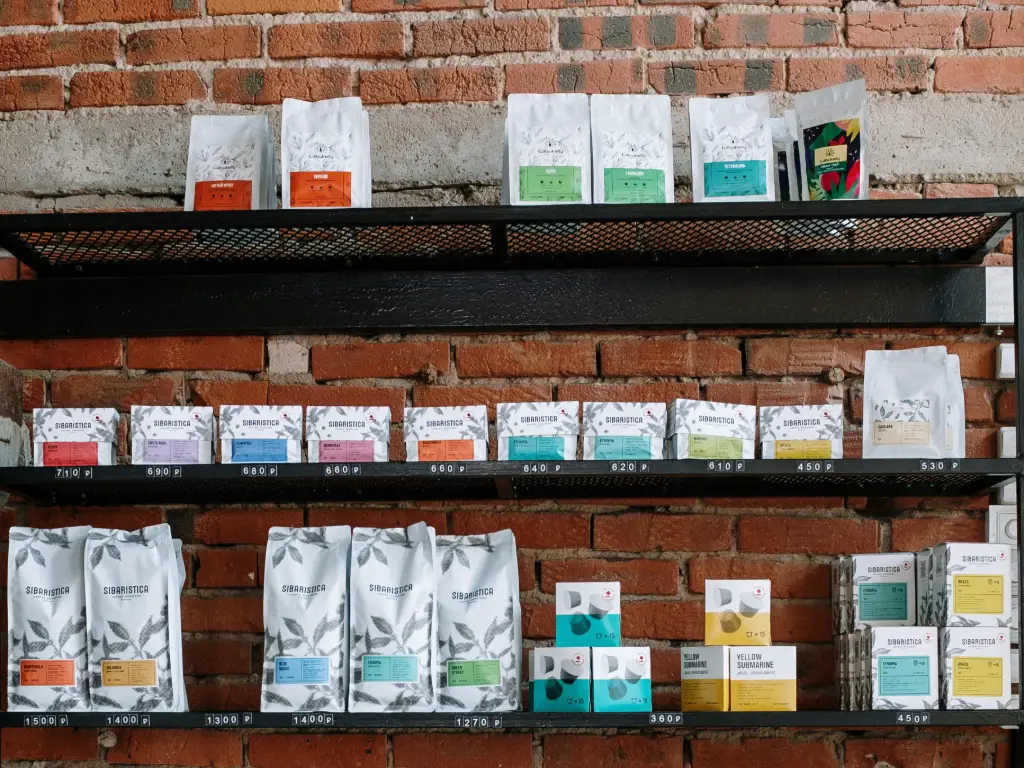
1. Begin Small and Scale Personalization
Smaller-scale roasters or newer brands can use low-cost customization options such as stickers, printed labels, or stamped kraft bags as an effective method of creating branded packaging without minimums. These solutions enable flexibility in roast type or seasonal editions, but consistency in logo, typography, and tone.
2. Invest in Full Printed Bags to Impact the Shelf
Custom-printed bags, e.g., flat bottom, quad seal, or stand-up pouches, are more cost-effective and effective as production scales increase. These formats provide a wide surface area to print in full color, matte, and intricate branding. A good visual consistency in your product line will help in shelf presence and consumer recall.
3. Communicate Important Information with Packaging
Roast profile, origin, and tasting notes are clearly labeled to facilitate informed purchasing decisions. Brand story, be it direct sourcing, sustainability, or artisanal roasting, will give credibility and emotion. The design must be a combination of aesthetics and readability.
4. Facilitate Digital Interaction
Customers can be directed to brew guides, sourcing transparency, or behind-the-scenes videos using QR codes, NFC tags, or printed URLs. This not only increases brand engagement but also functional value. Adding social media accounts promotes sharing and word-of-mouth advertising.
5. Brand Identity with Align Style
Minimalist kraft bags are an indication of authenticity and eco-consciousness. The use of bright colors and glossy surfaces indicates modernity and innovation. Select a visual language that suits the preferences of your target audience but also supports your positioning, premium, sustainable, artisanal, or convenience-driven.
Partnering with Baishen Pack: Custom Coffee Packaging that Delivers
In the case of specialty coffee packaging, Baishen Pack has more than 12 years of manufacturing experience and a portfolio that serves more than 1,000 brands worldwide in the food, beverage, and nutraceutical industries. Baishen is a Guangdong-based company that integrates high-tech production with customized service, which means that premium packaging is available to startups and existing roasters alike.
Baishen has the latest technology, such as HP Indigo digital presses and end-to-end processes, including printing and bag making, which guarantees short lead times of up to 7-10 working days and MOQs as low as 1,000 pcs. The company manufactures numerous formats, such as flat-bottom bags, gusseted pouches, kraft paper bags, and recyclable or compostable structures that are certified by ISO, SGS, and BRC standards.
Want functional customization? Baishen provides such options as resealable zippers, one-way degassing valves, tear notches, spouts, transparent windows, etc. With 24-hour design response and 8-hour customer service turnaround, Baishen is not a packaging printer, but a brand builder, a shelf performer, and a safeguard of each roast. Are you ready to change your coffee packaging? Call Baishen Pack now to order samples or to receive a custom quote to fit your next roast.
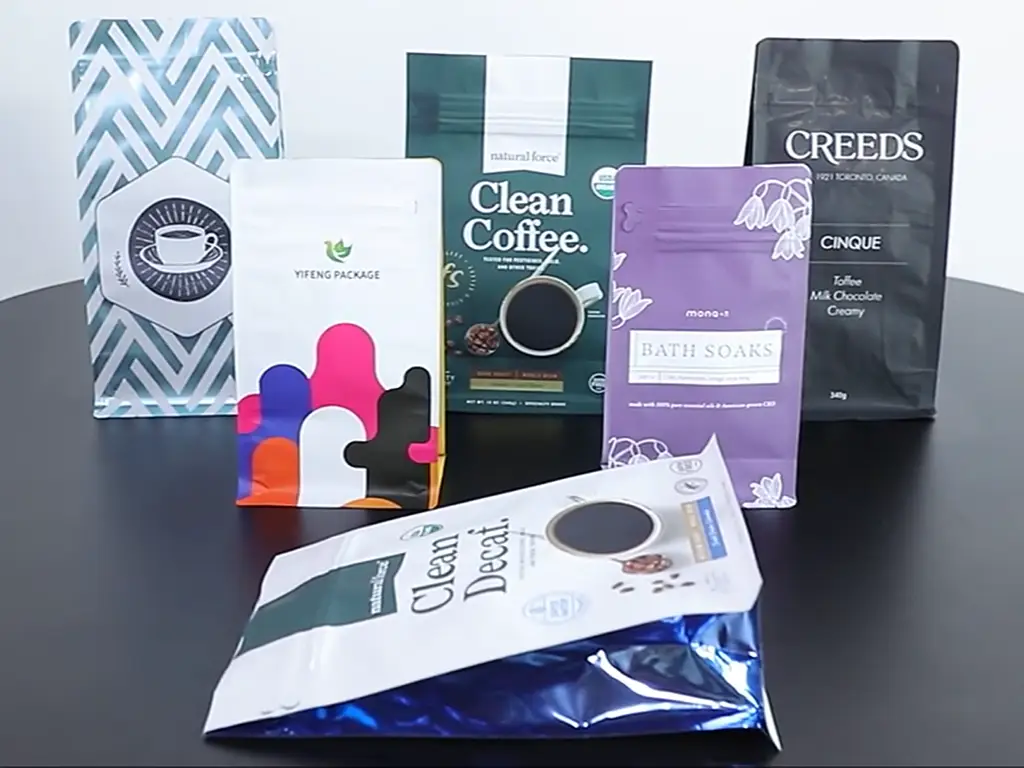
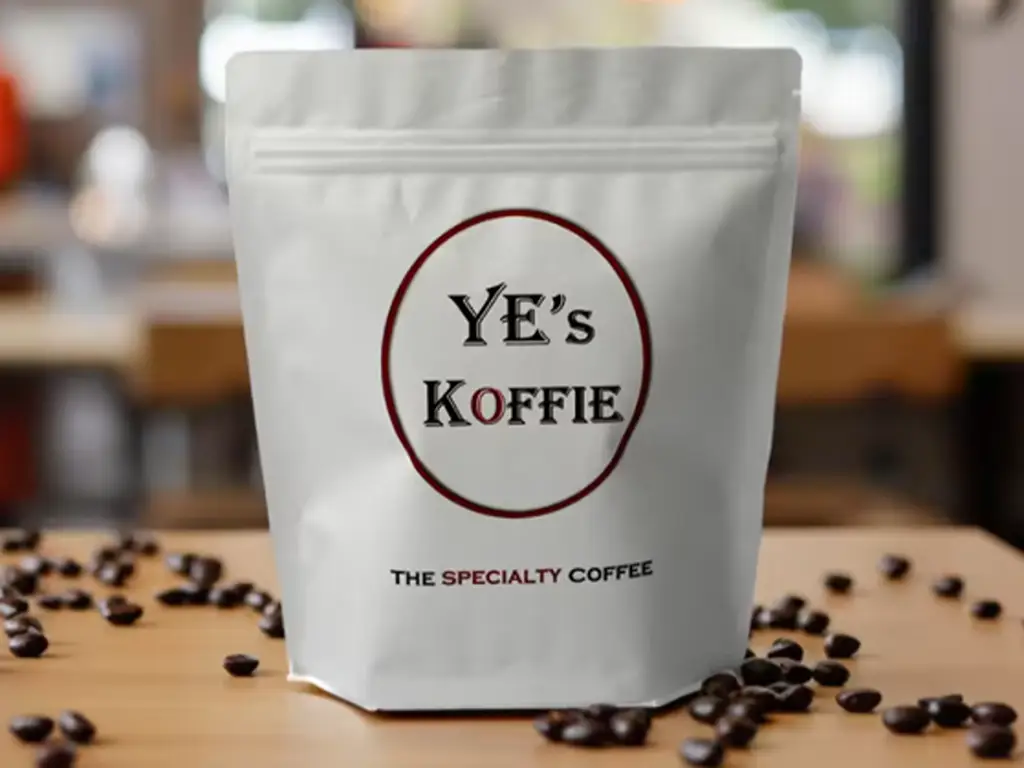

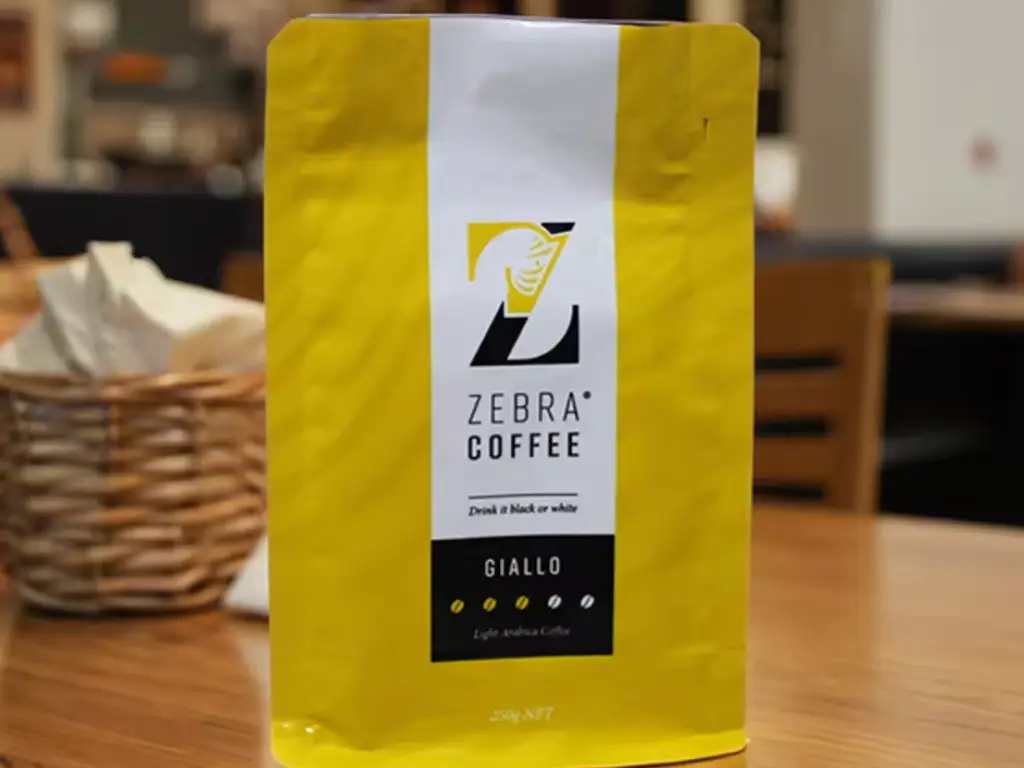
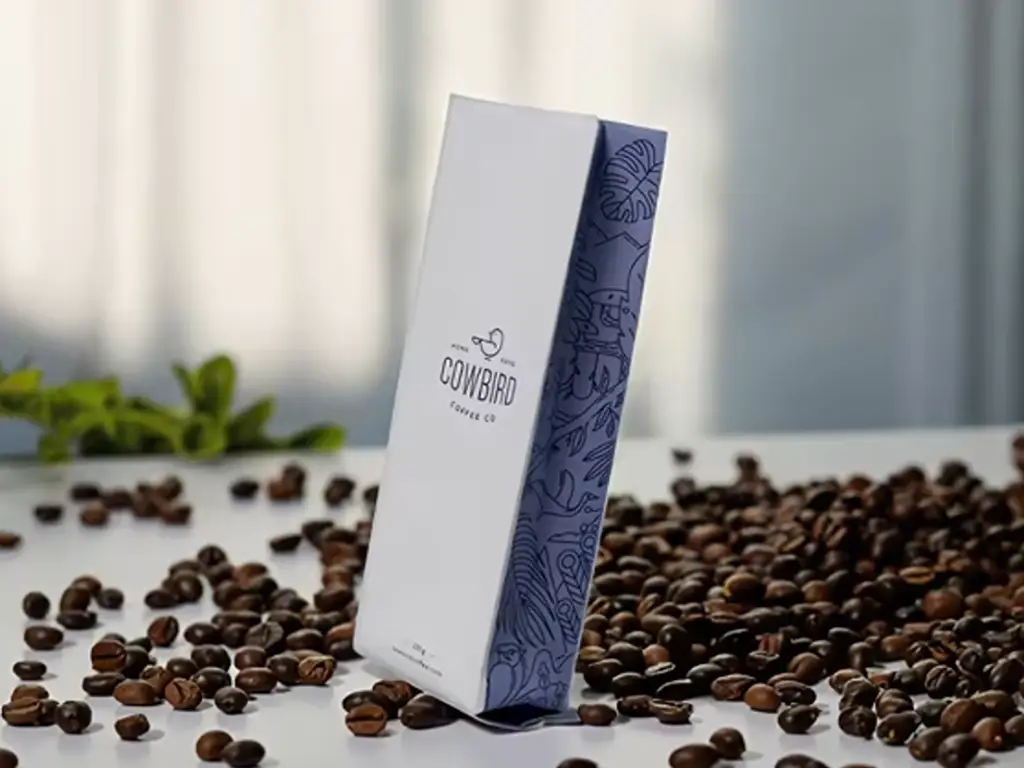
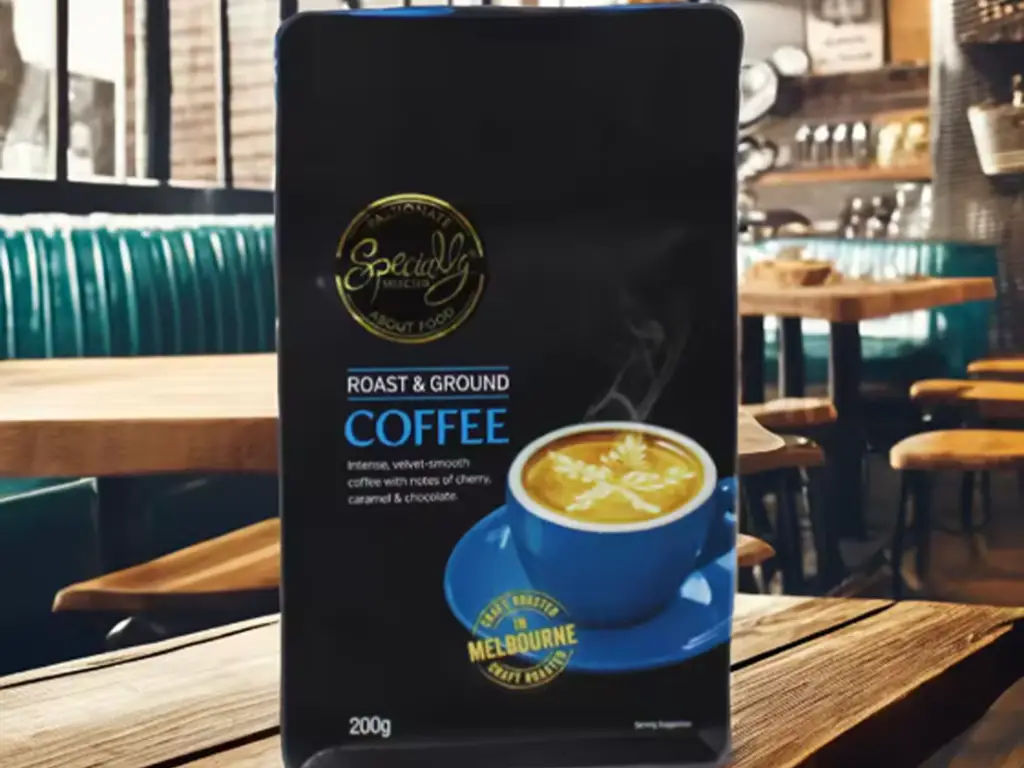
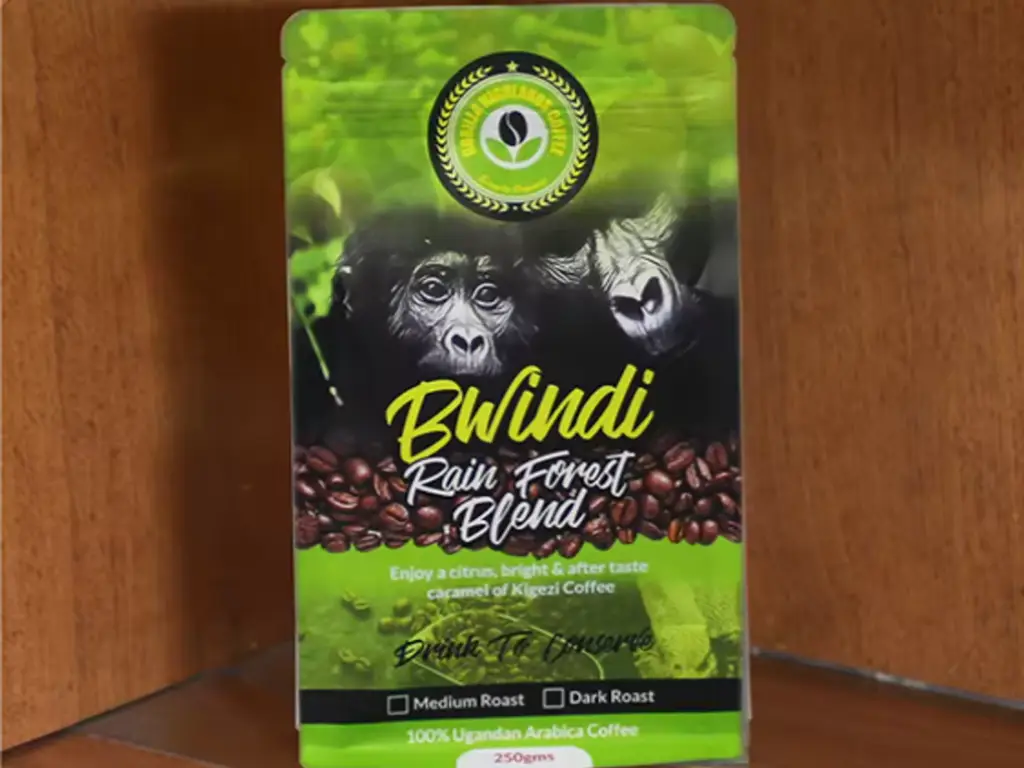
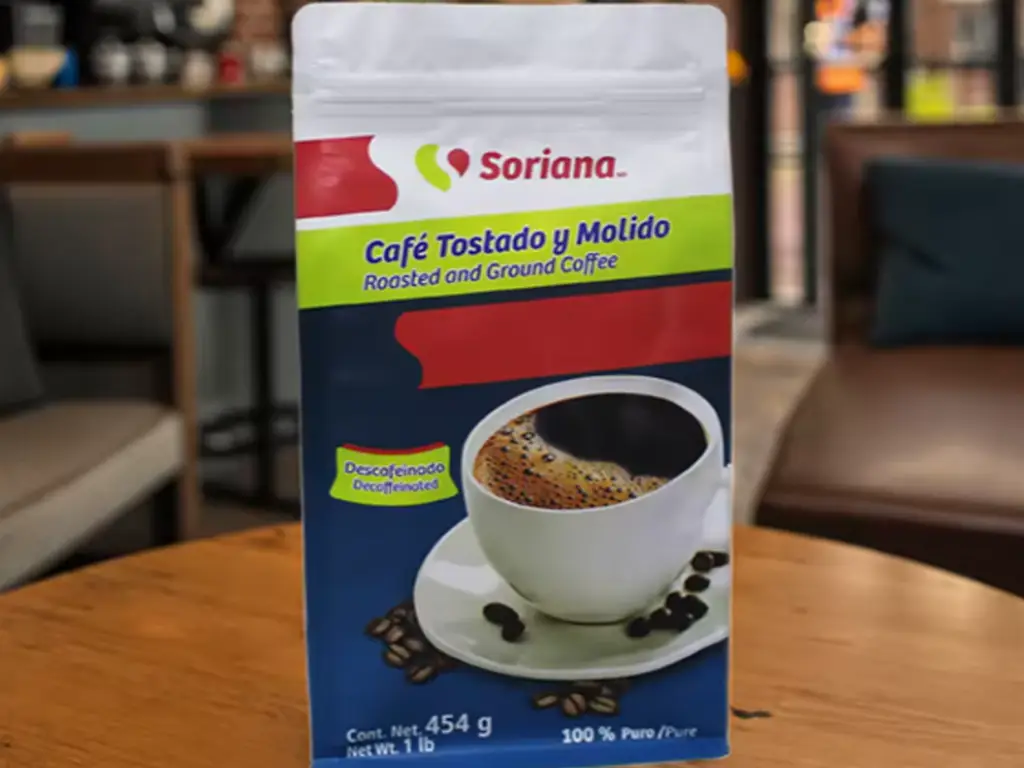
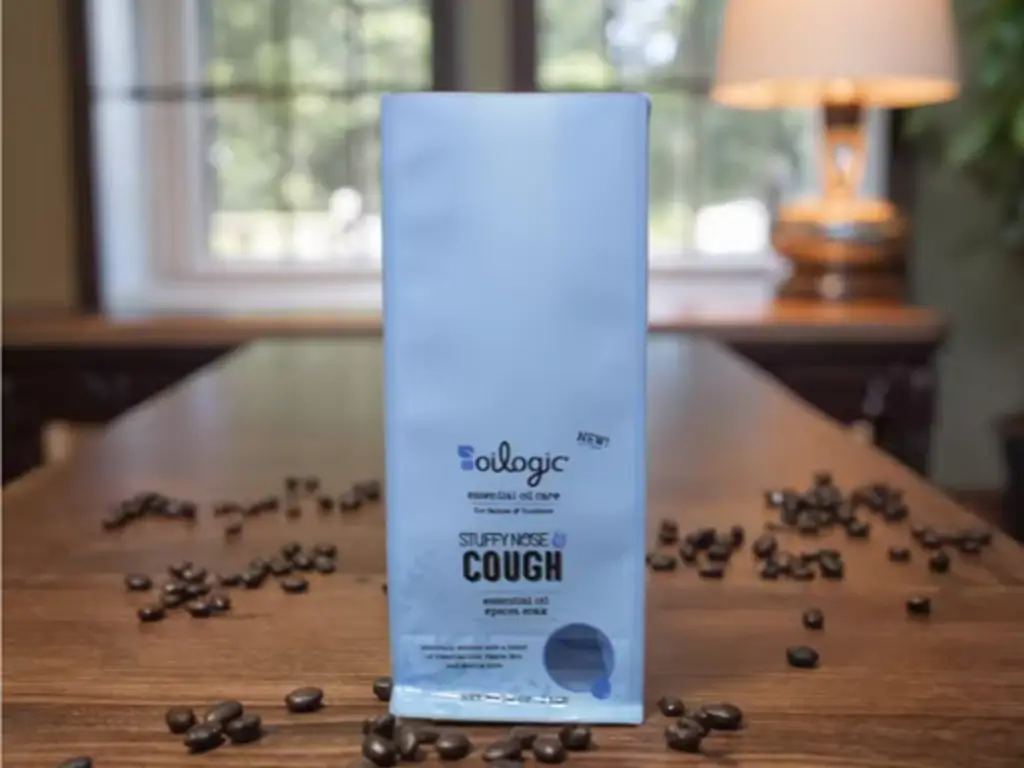
How Coffee Packaging Impacts Shipping and Distribution
Coffee packaging does not stop its work at maintaining freshness, but it is also a key to maintaining product integrity in shipping and distribution. When a bag cannot survive the trip between roastery and retail shelf or customer doorstep, quality is compromised, and costs increase.
The initial defense is structural durability. Such formats as quad seal and flat bottom bags are designed to withstand stacking pressure, puncture, and shape retention during long supply chains. They are more stable than soft pillow packs, particularly when bags are palletized or boxed. Such materials as PET or LDPE also increase tear strength and maintain valve integrity during compression, making the product safe even in the case of rough handling.
Logistics is also directly affected by the shape and weight of the packaging. Stand-up pouches and gusseted bags are more cost-effective to ship globally or as part of a subscription-based delivery model because they are flexible and minimize dimensional weight. Conversely, hard containers, such as jars or cans, increase volume, freight costs, and necessitate additional dunnage to avoid breakage, which results in increased costs and packaging waste.
There is another complexity of environmental exposure during transit. Coffee quality may be affected by moisture, oxygen, and temperature changes when the packaging does not provide adequate barrier protection. This is the reason why most roasters use multi-layer films that have high-barrier properties and close the package airtight by heat sealing. Such features as degassing valves and internal linings are not optional, but necessary to maintain flavor and avoid spoilage in diverse transit conditions.
Lastly, there are regulatory and operational needs that cannot be ignored. In international shipments, proper labeling like country of origin, batch codes, and roast dates is required to comply with customs and traceability. The integration of barcodes and QR codes not only helps in tracking logistics but also gives transparency to both retailers and end consumers.
Conclusion
Selecting the right coffee packaging is a strategic decision that blends protection, presentation, and brand values. From barrier materials that preserve freshness to design elements that capture attention on retail shelves, every choice impacts product quality and perception. Flat bottom and quad seal bags offer structural strength and premium branding space, while options like kraft paper or PLA signal sustainability. Whether optimizing for cost, function, or storytelling, packaging should reflect the identity of your brand and meet the expectations of your target market. Ultimately, good packaging protects more than just coffee—it supports shelf appeal, customer trust, and long-term brand value.
